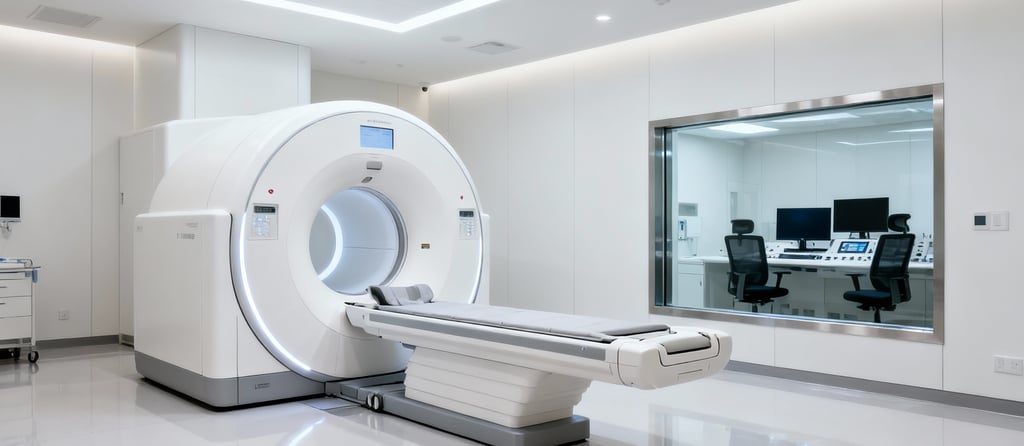Why Early Cancer Detection is Healthcare's Best Investment
Breaking down the compelling economic evidence that routine cancer screening saves both lives and money.
As healthcare costs continue to soar in the United States, one solution stands out as both clinically effective and economically sound: early cancer detection. Recent research provides overwhelming evidence that investing in routine screening programs delivers extraordinary returns—not just in lives saved, but in healthcare dollars preserved.
The Numbers Don't Lie
A groundbreaking study published in The American Journal of Managed Care in 2024 analyzed multicancer early detection (MCED) testing across 100,000 individuals. The results were striking:
💰 $152,270 - Average treatment cost savings per patient when cancer is caught early
📊 7,200 - Additional cancers shifted to earlier, more treatable stages
⏰ 4.85 - Additional life-years gained per early-detected case
The study demonstrated that early detection programs achieve a cost-effectiveness ratio of $66,048 per quality-adjusted life-year gained—well within accepted healthcare value thresholds.
The Prevention Premium vs. Treatment Penalty
Think of cancer screening as insurance with guaranteed returns. Here's the stark economic reality:
Early Detection Scenario:
Routine screening costs: Predictable, manageable
Treatment costs: Significantly reduced (often by $150K+ per case)
Outcomes: Better survival rates, higher quality of life
Late Detection Scenario:
No screening costs upfront
Treatment costs: Exponentially higher, often requiring intensive interventions
Outcomes: Lower survival rates, reduced quality of life, higher long-term costs
Real-World Impact: Colorectal Cancer Case Study
Colorectal cancer provides a perfect example of screening economics. This single cancer type generated $24.3 billion in medical spending in 2020, representing 11.6% of all cancer treatment costs. Research consistently shows that increased screening rates would dramatically reduce both cases and costs.
The pattern repeats across cancer types: breast, cervical, lung, and others all demonstrate the same economic principle—early detection pays for itself many times over.
The $6.5 Trillion Success Story
Perhaps most compelling is the aggregate impact. University of Michigan research calculated that cancer screening programs have already saved the U.S. healthcare system at least $6.5 trillion. This isn't potential savings—this is money already saved through existing early detection programs.
Why This Matters for Healthcare Leaders
For healthcare administrators, policymakers, and business leaders, the implications are clear:
Budget Allocation: Every dollar spent on screening saves multiple dollars in treatment costs
Population Health: Healthier populations mean more productive workforces
Risk Management: Early detection reduces catastrophic healthcare costs
Long-term Planning: Screening programs provide predictable cost structures
The Technology Advantage
Emerging technologies like multicancer early detection tests are expanding possibilities. These blood-based tests can identify signals from 50+ cancer types, potentially catching cancers that traditional screening methods miss. While the technology is still evolving, early economic models show promising cost-effectiveness ratios.
Implementation Reality Check
Of course, successful screening programs require:
Equitable access across populations
Appropriate follow-up systems
Patient education and engagement
Integration with existing healthcare infrastructure
But the economic case is unambiguous: the cost of inaction far exceeds the investment in early detection.
References
Kansal AR, Tafazzoli A, Shaul A, et al. Cost-Effectiveness of a Multicancer Early Detection Test in the US. The American Journal of Managed Care. 2024;30(12):e352-e358. https://www.ajmc.com/view/cost-effectiveness-of-a-multicancer-early-detection-test-in-the-us
Centers for Disease Control and Prevention. Colorectal Cancer Control Program. CDC National Center for Chronic Disease Prevention and Health Promotion. https://www.cdc.gov/cancer/dcpc/research/articles/colorectal-cancer-control-program.html
University of Michigan Institute for Healthcare Policy & Innovation. Research on the aggregate value of cancer screening programs. https://ihpi.umich.edu/news-events/news/cancer-screenings-have-saved-us-least-65-trillion-study-estimates
National Cancer Institute. Cancer screening research and population health studies. https://www.cancer.gov/






